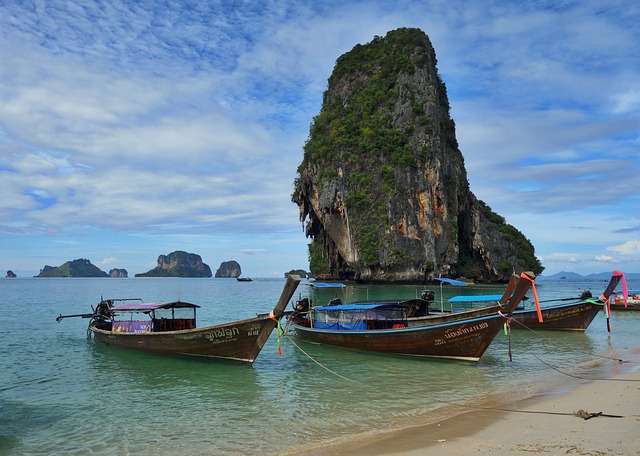
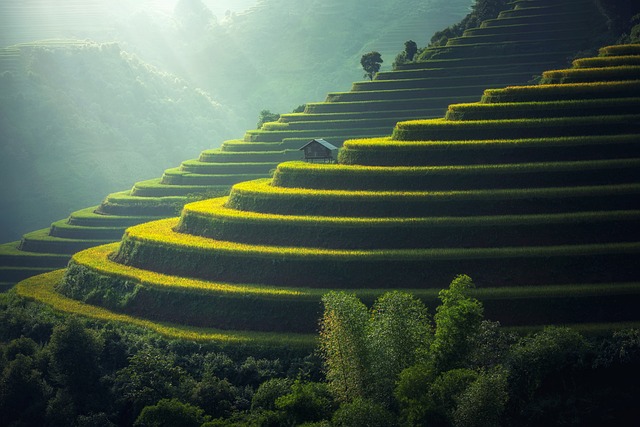
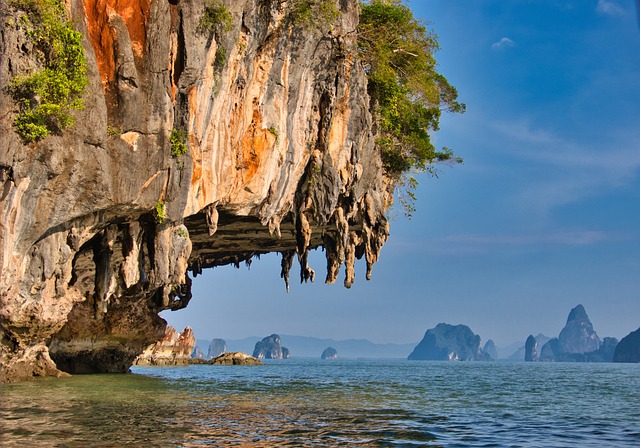
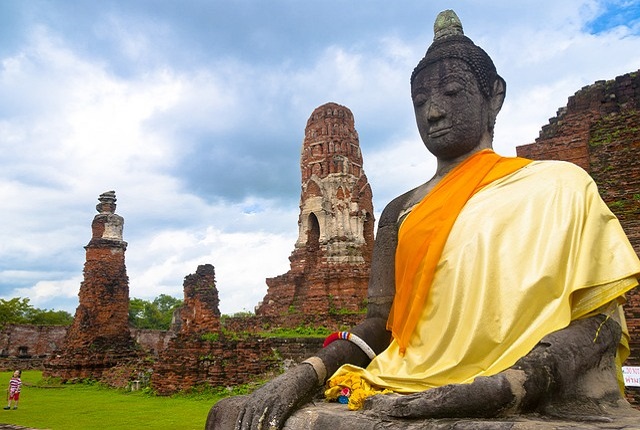
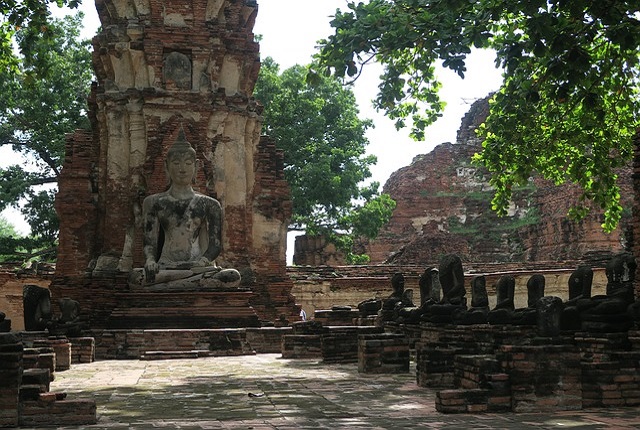
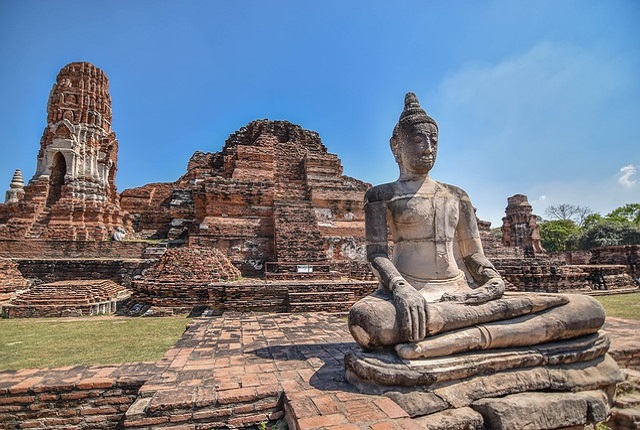
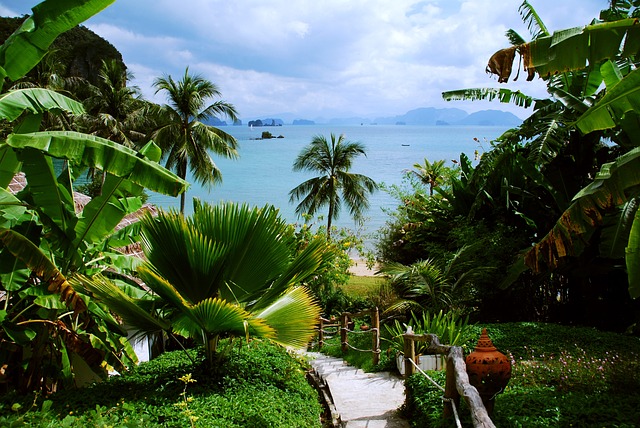
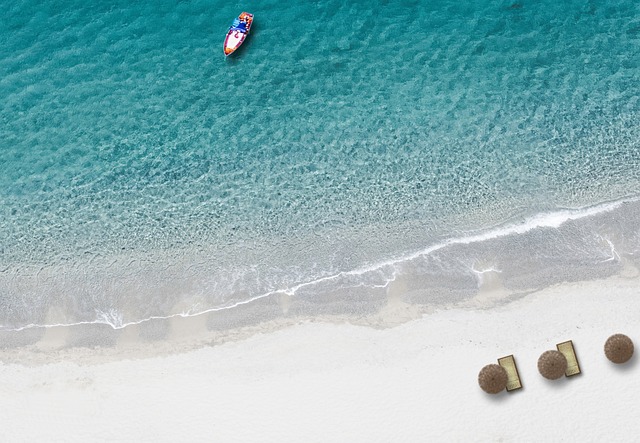
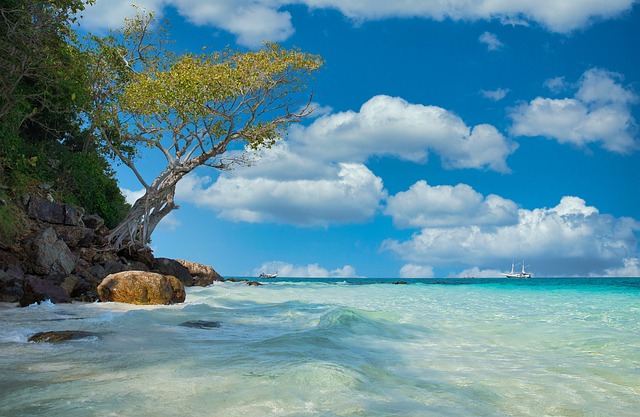
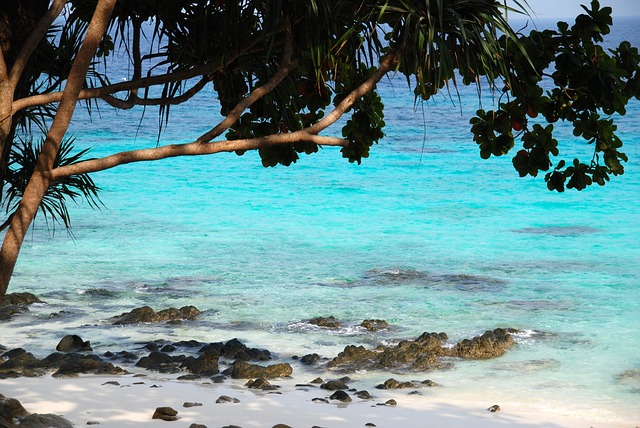
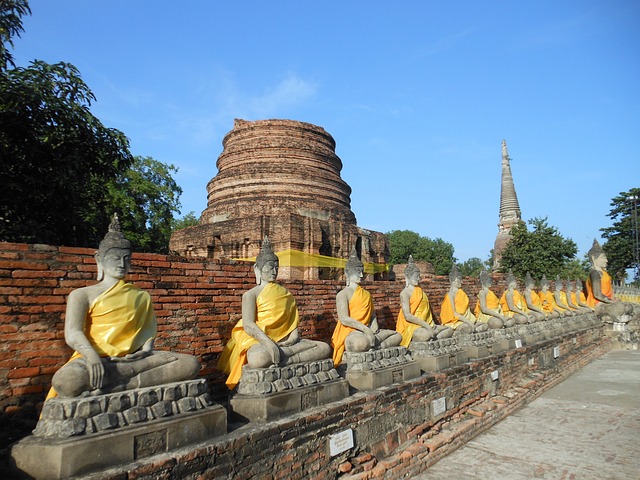
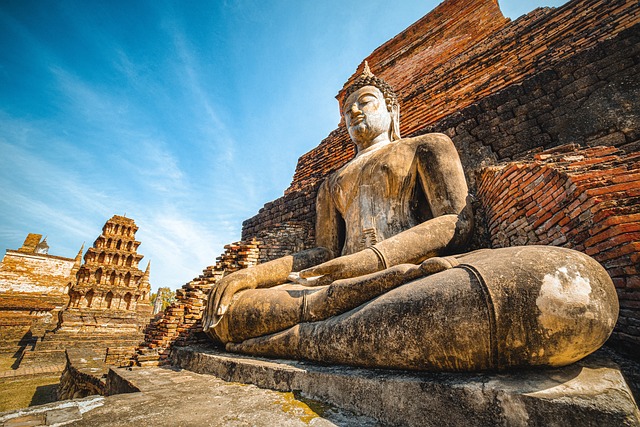
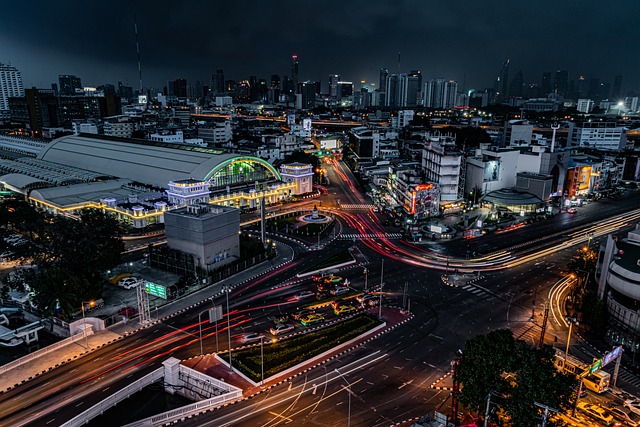
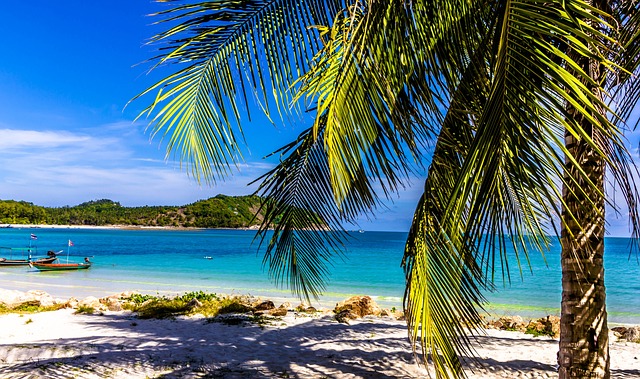
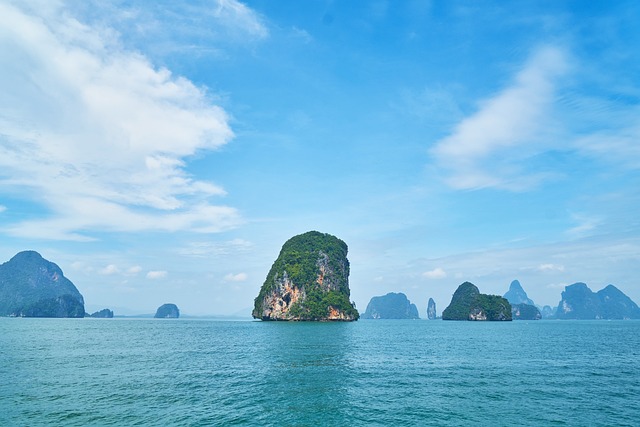
 Breakfast
Breakfast
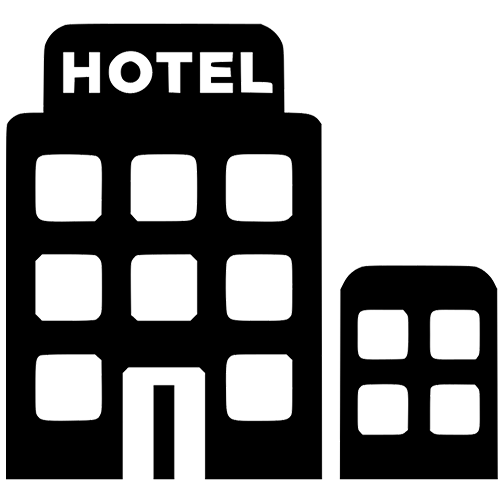 Hotel
Hotel
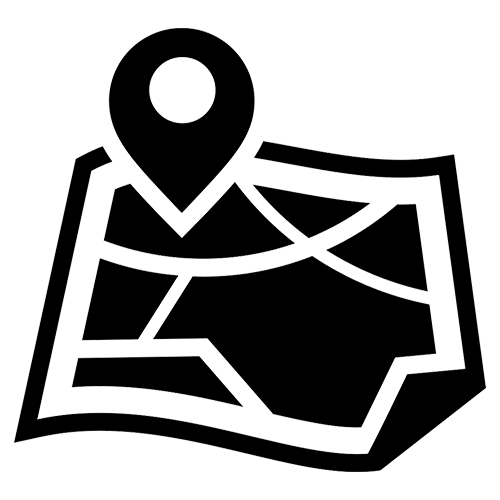 Sight seeing
Sight seeing
.png) Transfer
Transfer
Do you remember the title song of “ kaho Na Pyar hai ? where Hrithik Roshan and Amisha patel grooved to the melodious song and the camera dwells long and lovingly over the breathtaking beauty of the island. The ethereal white sand, calm water and picturesque desolation of the island has every feel of that first love. The place is none other than Phara Nang Beach in Thailand.
Thailand is the new muse of filmmakers. Karan Johar’s chic and stylish young film “Student of the Year “ was shot extensively in Bangkok, Koh Samui. And if you are fan of Hollywood then definitely you cannot just forget how beautiful, clean heavenly the beach was in “the Beach”! Thailand is a well-known tropical paradise in the world and it provides good hotels, well-maintained tourist locations, and offers an amazing culture.
India and Thailand have a strong cultural connection that includes shared traditions, religions, and history. Moreover, India and Thailand have been culturally linked for centuries, with India deeply influencing Thai culture. Thai borrows a substantial number of words from Sanskrit, India's classical language. Pali, which was the language of Magadha and is the medium of Theravada, is another important root of Thailand. Thailand’s diversity, happening night life, affordability, clean pristine locales, and mouth smacking Thai cuisine makes it a top choice for any traveler seeking adventure and relaxation.
Thailand has a well-developed transportation infrastructure, including modern highways, ports, and airports. This makes it easy for businesses to transport goods and services both domestically and internationally. Thai ports like Laem Chabang and Map Ta Phut, which rank among the busiest in Southeast Asia, have played a crucial role in the development of the nation’s export-focused economy. Thailand is an ideal location for international expansion, as it provides quick access to both local and international markets in the ASEAN (Thailand is the founding member of ASEAN) region. The nation offers enterprises numerous benefits for trade and investment, as a gateway to ASEAN and beyond.
Part of Thailand's appeal is its warm temperatures throughout the year, but its weather is dramatically characterized by two monsoon seasons. As a result Thailand's weather tends to be defined by three seasons: the wet season (May to October), the cool season (November to April) and the hot season (march to May) .The best time to visit Thailand is during the cool and dry season between November and early April, when temperatures range from 29°C to 34°C. However, the climate varies throughout the country and you can visit all year round. In the south, the climate differs between the eastern and western coasts.
The Old City – an attraction in itself – is located near Ping River and its proximity to the neighboring trading spots makes it important city. Encircled by jungle-clad mountains inhabited by indigenous communities, the “Rose of the North” serves up sacred temples, golden pagodas, and some of the country’s—if not the region’s—best cuisine, cooked fresh by street-side vendors. If you are willing to travel a little further afield, you will find that Chiang Mai is ringed with outstanding, unique places to see and things to do. Chiang Mai (meaning "new city" in Thai) was founded in 1296 as the new capital of Lan Na, succeeding the former capital, Chiang Rai. Chiang Mai is a city in mountainous northern Thailand. Popular tourist activity includes worshipping the Phra That Doi Suthep, experience the local and vibrant way of life and shop for stylish handmade products at Thapae Walking Street. Visit various species of plants at the Queen Sirikit botanical garden and Rajapruek Royal Park. For more adrenalin rush just go for hiking the trails of Doi Inthanon National Park, and the rugged canyons of Pai.
Chiang Mai has international airport connected to major cities of neighboring countries like China, India, Myanmar, Indonesia etc. The easiest way to reach Chiang Mai from India is to take a connecting flight via Bangkok. There are many Indian cities like Delhi, Chennai, Kolkata, Bangalore, and Mumbai having flights to Bangkok. The shortest flight is from Chennai
Once you are in Chiang Mai you can take any of the following to get around the nearby places all of them are quite cheap and safe:
The fastest way to get from Chiang Mai to Bangkok is to fly which takes 3h 5m and costs $26 - $100. There a direct bus or train between Chiang Mai and Bangkok and it will take around 10 to 14 hrs.
Bangkok is one of the world's top tourist destinations. Of 162 cities worldwide, Master Card ranked Bangkok as the top destination city by international visitor arrivals in its Global Destination Cities Index 2018, ahead of London, with just over 20 million overnight visitors in 2017. The name of the airport of Bangkok, Suvarnabhumi, itself says how rich and deep the cultural roots are of Bangkok. Though now it is a busy metropolis with thriving night life and progressive street culture. It is key economic hub in South East Asia with the city dominated by skyscraping luxury hotels and sprawling retail centers. Despite its modernity the city retains its old world charm with its breathtaking beauty of splendid architecture at places like Rattanakosin . The city offers infinite choices of street food which is both reasonably low priced and tastes good too. So, it is a paradise for all sorts of travelers who just want t o has fun in life or add meaning to it that too on budget.
Major tourist attractions in Bangkok includes historical sites or religious sites such as
Wat Phra Sri Rattanasamaram (Phra Kaew),
Wat Phra Chetuphon Wimon Mangalaram (wat pho),
wat arun Ratchawararam,
Wat Sra Ket
Phra Bor Banphot (Golden mountain),
Wat Ratchanadda,
Wat Traimit,
Wat Benchamabophit,
Wat Bowonniwet Vihara Suthasan,
WatThepWararam
There are also other interesting places such as palaces, museums, parks, as well as various shopping centres in Bangkok There are both chilling places like Chatuchak Weekend Market, Sampeng Market, Yaowarat and Phahurat night market.
The city of Bangkok has two major airports - The Suvarnabhumi Airport (BKK) and The Don Mueang Airport. Both are connected to major airports of the world like that of USA, China, India, Malaysia, Indonesia, Maldives etc.
There are a few different ways to get around Bangkok depending on where you're staying and where you're headed...
SkyTrain
The Skytrain is an elevated train that is also known as BTS. They are useful for avoiding Bangkok's crazy traffic if you need to get around "new Bangkok" the areas around Silom, Sukhumvit, and Siam Square.
Metro
Bangkok's metro system (MRT) is also good for traveling between the Sukhumvit or Silom districts to reach Hualamphong Train Station. It is cheap: tickets cost from 16 THB (US$ 0.50) to 42 THB (US$ 1.20) or 120 THB (US$ 3.50) for a one-day pass and again, the trains run frequently from 6 am to midnight.
Boats
Bangkok is split in two by the Chao Phraya River, and the west bank (formerly Thonburi) is still home to an extensive canal system. One of the best ways to visit sights along the river bank, like the Grand Palace and wat pho temple, is by boat.
Taxi
Traveling around Bangkok by taxi is surprisingly cheap - sometimes even more so than the Skytrain - plus, it is comfortable and easy, and the drivers are usually friendly. If you cannot find a taxi willing to use the meter late at night, there are taxi apps available: Grab Taxi and All Thai Taxi.
Grab
This new app-based taxi company is a good way to get around Bangkok. journeys are reserved via a mobile application, and the journey has a fixed fare meaning that you will avoid arguments and haggling with taxi drivers. The application allows payment by card, or you can pay the driver in cash.
Tuk-tuks
Those iconic motorized rickshaws are used by locals and tourists alike for short journeys that are not worth the taxi fare.! It is better to go at night when the pollution is not as bad
Located in the Sattahip district of Chonburi, you can get to Koh Kham by taking a minibus from the Ekkamai bus terminal to Koh Kood pier, then a ferry to Koh Kood, and finally another ferry to Koh Kham.
About 75.1 km from Bangkok, you can get to Koh Si Chang by taking a government bus from Bangkok's Northern Bus Terminal (Mo Chit) or Eastern Bus Terminal (Ekamai), or by taking a ferry from the pier on Ko Loy.
A T-shaped island in Rayong, about 2.5 hours from Bangkok, known for its white sands and tropical setting. You can get to Koh Samet by driving to Ban Phe Pier, then taking a ferry to the island. Some activities on Koh Samet include deep sea fishing, kayaking, and canoeing.
You can also take a flight from Bangkok to Koh Samu
Ratchaburi is the land of the Mae Klong Basin civilization with the foggy Tanao Si Mountains. It is one province in the west of central Thailand which is full of various geographical features; for example, the low-lying land along the fertile Mae Klong Basin, fields, and Tanao Si Mountains which lie in to east stretching to meet the Thailand-Myanmar border.
From legend and historical evidence, it is assumed that Ratchaburi used to be one of the civilized kingdoms of Suvarnabhumi in the past, from the reign of the Great King Asoka of India, who announced the Lord Buddha's teachings through this land around 325 B.C.
Many kinds of art can be found in Ratchaburi, which is why it is called “a city of arts.” There is the art of temples, the art of puppets, the contemporary art, Art for the Heart, etc., the Tourism Authority of Thailand (TAT) was chosen the Ratchaburi province as one of the 12 "The city that you don't want to miss" under the concept "Community Arts of Ratchaburi". Other important places to visit in Ratchaburi are:
NaSatta Park, (25 Kilometres from Damnoensaduak Floating Market), NaSatta Park is a unique experience for people of all ages to discover the cultural heritage of Thailand in an educative and playfulway. Stretching out over 7 hectares, park exhibits accurately reconstructed temples, houses and Buddha statues from various historical periods and regions of Thailand. In the park stories come to life through spectacular light and sound animations and the displays of wax and fiberglass figures in reconstructed environments.
Damnoensaduak Floating Market. It is an identity of Ratchaburi and is also well known around the world. Damnoen Saduak Floating Market is in the Damnoen Saduak district. It shows the people's life style and the importance of the river as the means of commerce. The vendors would paddle their boats up and down the waterways selling and bartering their merchandise. Nowadays, many tourists from around the world come to visit because it shows an old fascinating style tradition. That is why the Damnoen Saduak Floating Market became the top ten of famous places in Thailand.
Khao Chong Pran Cave Bat. Khao Chong Phran is located in Tao Pun sub-district, Photharam district, 17 kilometres north of Ratchaburi. The most famous thing to see at Khao Chong Phran is a giant flock of more than a million bats flying out of the cave together and forming a large black and long line across the sky.
Khao Bin Cave Khao Bin Cave is the most beautiful cave in Ratchaburi. It is located 20 kilometres from the town along the route to Chom Bueng district.The cave extends 300 metres from the mouth and offers truly amazing scenes of plentiful stalactite and stalagmite formations.
Museum Wat Khanon Nang Yai. Wat Kho non-Nang Yai is in Photharam district. It is 10 kilometres from Photharam district. It is an old form of entertainment which gathers many kinds of arts, for example Thai designs, sculpturing, mask playing and Thai literature. At present, Ratchaburi province is organizing a Nang Yai performance for tourists. There are about 330 Nang Yai puppets all of which are still in perfect condition to be shown on screen.
The nearest airport to Ratchaburi is Don Muang (DMK) Airport which is 94.3 km away. Other nearby airports include Suvarnabhumi (BKK) (102.6 km), Utapao (UTP) (159.7 km) and Dawe (TVY) (185.1 km). There are plenty of transport options to reach Ratchaburi. This city is on the major north-south line with trains stopping at regular intervals. The town has the main Ratchaburi train station as well as a very small station further along the river. But both stations are within a relatively short distance from town. A train journey from Bangkok to Ratchaburi costs in the region of $1-$2 – although the rate can change with the train and class of seat – and travel time is about 2.5 hours.
A regular bus route runs to Ratchaburi from Bangkok, which arrives at the station located to the southwest of town. The bus departs from the Bangkok’s Southern Bus Terminal every 20 minutes and costs about $2.50 Alternative options include hiring a car and travelling along Highway No. 35 and turning right at Highway No.4.
Once you are here you can visit the popular tourist destination using the following:
Phetchaburi is a province in central Thailand bordering Myanmar (Burma) to the west and the Gulf of Thailand to the east. The dense rainforest of Kaeng Krachan National Park covers nearly half its area, offering hiking trails and camping. Phetchaburi has changed its character to a town of charming beauty with peaceful seaside resorts and superb natural reserves. Three kings of the Ratanakosin Period, King Rama IV, V, and VI established their rainy season retreats here, each building a Palace respectively named Phranakhonkhiri, Phraramrajanivet, Phrarajnivesmarugadayawan. Consequently, Phetchaburi is also known as Muang Sam Wang, the city of the three palaces.
Phetchaburi is also well known for its splendid historical park, ancient temples, wonderful beaches and caves, as well as a great variety of local foods and fresh seafood. Phetchaburi is known for its banana stalk carving, which is traditionally used to decorate crematoriums during funerals. Phetchaburi is also known for its Thai lacquer works.
Phetchaburi has many historical sites, including:
The nearest airport to Phetchaburi is Hua Hin (HHQ). However, there are better options for getting to Phetchaburi. State Railway of Thailand operates a train from Krung Thep Aphiwat Central Terminal to Phetchaburi 4 times a day. Tickets cost ₹180 - ₹2,600 and the journey takes 2h 40m. Alternatively, you can take a bus from Dawe (TVY) to Phetchaburi via Yangon, Myawaddy, Mae Sot, and Bangkok Mochit Bus Terminal in around 41h 9m. however tourists generally take flight to Bangkok and around 2 hr drive from here to Phetchaburi which is more convenient.
There are a few ways to get around Phetchaburi including renting a vehicle, taking a tuk-tuk, or riding a tricycle taxi:
Phuket, the largest island in Thailand, is situated in the southern part of the country, within the Andaman Sea. The island is characterized by its mountainous terrain, with a mountain range extending from the north to the south along its western side. Whatever may be your age, choices, or budget there is something for everyone in Phuket. The island city has lovely hotels, thriving night life, desolate beaches, enticing food and restaurants, splendid natural view, and of course cultural diversity. Its no secret that Phuket have best stretches of white sand beaches in the country, the famous being Patong, Kata and Karon. But in truth the best is well kept local secret like Banana beach, located just north of Surin beach resort. Laem Sing beach located south of it and don’t forget to visit secluded Naithon Beach What else? There is so much to see so much to savor at this island that surely you will want to come back again and again
Big Buddha A 45-meter-tall white jade marble statue that sits on top of the Nakkerd Hills, with panoramic views
Pa Tong A nightlife center on the west coast of Phuket, with Patong Beach, restaurants, and shops
Phi Phi Islands A group of six islands that is a top choice for families, with exotic flora and wildlife
Phang Nga Bay A popular attraction with limestone rock formations, lagoons, and archaeological sites
Karon Beach A relaxing beach with white shores that stretches for about three kilometers
James Bond Island An island with limestone cliffs and turquoise waters that was featured in the 1974 James Bond movie
Phuket has international airport (HKT) connected with direct flights from many Indian cities and with other major cities of the world. It is a thriving transport hub which plays a vital role in promoting the tourism industry of Thailand. It is the second busiest airport in Thailand after Suvarnabhumi International Airport in Bangkok
Bangkok’s nearest seaside town, is located on the eastern coast of the Gulf of Thailand only 80 kilometers from the capital. The area boasts abundant natural resources, which are highlighted by delightful beaches, local traditions, regional delicacies, and fresh seafood. This is a popular coastal province among Bangkokians who seek the nearest escape from hectic weekly schedules, escaping particularly frequently to the seaside resort of Pattaya though Chonburi’s smaller, quieter seaside towns are also quite popular with foreigners and Thais alike. In addition to tourism, Chonburi is the center of the Eastern Seaboard Development Project, with its industrial parks and fishing villages.
The adventurous may choose to visit Khao Sam Muk, where there are a Chinese shrine and cactus Gardens on the hilltop and many wild monkeys along the hillsides. Chonburi is also a heaven for Beach lovers, with hotspots like Bang Saen, Pattaya, and ko Lan. Nong Mon Market is where you can shop for local souvenirs such as handcrafted products and delicious foods like Ho Mok or Thai steamed fish curry, Khao Lam or sweet sticky rice in bamboo
Chonburi is a popular destination for beach lovers, with beaches like Bang Saen, Pattaya, and Ko Lan. Bang Saen Beach is known for its natural beauty and peaceful atmosphere, and is a great place for picnics and cycling.
The best way to get here to take flight to its nearest airport which is Suvarnabhumi (BKK), which is 50 km away. Other nearby airports include Don Muang (DMK) (74.1 km), Utapao (UTP) (76.4 km) and Trat (TDX) (188.6 km)
Ubon Ratchathani the north-east's largest City, is another interesting and beautiful city to visit. It may not look the part, but, alongside Udon Thani, Khorat, and Khon Kaen, Ubon Ratchathani is one of the Isaan Region’s “Big Four” cities. The capital city of Bangkok is some 630 km (395 mi) to the west of Ubon while the borders of both Cambodia and Laos are less than 100 km (65 mi) away.
The name means "royal lotus city". Ubon Ratchathani a riverside city on the banks of the Mun River. Upon arrival, you may find that you have Ubon all to yourself. Explore its natural attractions, temples, riverside cafes, and rustic markets, as you embark upon an experience you will remember for life. The charm of Ubon lies in its laid-back calm that permeates throughout the area’s attractions. The “Emerald Triangle” where the three countries meet has long been known for its untamed landscapes, with striking mountain ranges and verdant jungles run through with rivers. To see just how wild the Emerald Triangle’s terrain can be, visit the area’s most striking natural formations:
Sam Pan Boak or the Grand Canyon of Thailand, Huai Sai Yai Waterfall, one of the most beautiful waterfalls of Northeastern Thailand, Kaeng Saphuee Public Park all are here in Ubon Ratchathani. The famous candle festival is also celebrated here Ubon Ratchathani is also famous for its food. Known as Isaan cuisine, there are many famous dishes that are common in Ubon Ratchathani. You may have heard of larb, a dish made of a minced protein such as chicken, pork, duck, or beef, mixed with vegetables such as shallots and onions, and seasoned with chili and lime. Another popular dish, the Isaan sausage is a flavorful fermented pork sausage.
The nearest airport to Ubon Ratchathani is Ubon (UBP) Airport which is 2.5 km away. Other nearby airports include Pakse (PKZ) (100.7 km) and Roi Et (ROI) (150.5 km).
Here are some ways to get around Ubon Ratchathani
Bus The bus network has 13 fixed routes, most of which are numbered and color-coded. The Ubon Ratchathani Bus Terminal is located on the Ring Road (Highway 231) in the northwest of the city.
Tuk-tuk or samlor These are common modes of transportation in the city. Agree on a fare before getting in, and expect to pay 20-40 baht.
Taxi There are two taxi stands in the arrivals hall at Ubon Ratchathani Airport. You can buy a taxi voucher to the city center for about 100 Baht.
Rented vehicle You can rent a motorbike or car to get to the national parks in the province. You can also rent a bicycle to get around the city and explore the neighborhoods.
Pattaya is a popular Beach resort on the Gulf of Thailand, just 150 km southeast of Bangkok –a mere two-hour drive. Pattaya is extremely famous for its amazing night life. Local authorities have, in recent years, improved the quality of the Beaches and reinvented the resort as a more family-friendly destination.
This coastal city is mostly famous for its breathtaking view of beautiful beaches, exotic water sports and pulsating outdoor activities. Today, hundreds of thousands of visitors are drawn each year to Pattaya to windsurf, water ski, swim, sunbathe, snorkel, sail, or take trips to nearby islands. Other activities include Bungee jumping, cycling skydiving, go-Karting, Muay Thai (Thai boxing), and Paintball. Golfers both novice and expert, are well catered to as well, with a wide selection of golf courses around Pattaya. Another major draw for visitors to Pattaya is the wide selection of restaurants serving some of Thailand’s freshest seafood. Due to the high number of expatriate foreigners in Pattaya there is also an excellent selection of authentic foreign eateries serving French, Italian, Swiss, German, Hungarian, Scandinavian, English, Indian, Arabic, Japanese and Chinese cuisine.
The nearest airport to Pattaya is Utapao (UTP) Airport which is 31.2 km away. Other nearby airports include Suvarnabhumi (BKK) (86 km), Don Muang (DMK) (113.3 km) and Trat (TDX) (172.4 km).
Baht buses or Songtaews as they are sometimes referred to, are a fantastic way to get around the city and run along all major routes. You can stop baht buses and ask them to take you to a specific location.
Festivals are the best way to know about the local culture, their art and ethnicity. The joy of simply being a part the festivals one can have endless emotional extravagaza of happiness and merrymaking. festivals are also the time when one can observe how cordial and open hearted the people are. oh, did I forget to mention the most important part of festivals THE FOOD!!!
All the best festivals in Thailand are full of celebration, where it is also an entertaining thing to see for the eyes. It is often colorful and beautiful. Some festivals might feel more spiritual, and to join or witness them can make you realize the spiritual significance in Thai culture.
Songkran Festival, the Water Festival of Thailand is perhaps one of the most fun festivals in the country, and possibly in the world! This long and large festival involves a 3-day water fight in which people participate across the country. With drinking, music, dancing, and people drenched from head to toe, people use buckets, hose pipes, water guns, and anything else that they can get their hands on to use to splash water on others. Sounds fun???
Held In: April
If you want to see even more spectacular Thailand festivals and celebrations, you should plan your trip around the festival of Yi Peng or the Lantern Festival. Like in countries like China and Vietnam, Chiang Mai’s Lantern Festival is one of the most amazing sights you will ever see. People gather down by the banks of the Peng River and release thousands of paper lanterns into the sky and watch them float away in the gentle evening breeze. Although it is a more of a tradition than a festival, it is definitely a fantastic photo op for capturing some beautiful memories. You can also witness religious ceremonies, firework displays, parades, and the releasing of paper boats in the river.
Held In: November
Chinese New Year, one of the most exhilarating Thailand celebrations can be witnessed in Yaowaraj – the official Chinatown of Bangkok. Every nook and cranny of the street as well as surrounding alleys, comes to life with dragon and lion dancers, exploding firecrackers, iconic red Chinese lanterns, crowds of worshippers as well as locals who gather to participate in the fanfare and enjoy mouth-watering Chinese banquets. So, if at all you happen to be in Bangkok around the Chinese New Year, head straight to the northern edge of Chinatown, i.e., Wat Mangkon Kamalawat on Charoen Krung Street. Hands down, it is undoubtedly one of the most joyful Thai festivals.
Held In: 1st February
Also known as the Rocket Festival, this is a famous festival in Thailand that is significant to the farming communities of Issan, which is in the north-eastern part of the country. Entire villages attend the festival because they are considered the last big ‘knees up’ before the start of the planting season. The rockets are shot up to encourage the Gods to send down plenty of rainfall. Elaborate rockets are built and paraded around on the first day of Boon Bang Fai, and then launched high into the air throughout the weekend. Every Rocket Festival is accompanied by live folk music, beauty pageants, drinking of local rice wine, and a party full of fun and frolic.
Held In: Annually in mid-May
As the name suggests, this festival is celebrated for these giant animals of Thailand. Historically, elephants were considered a very pivotal part of Thailand during the battle, agricultural procedures, as well as for traveling. Moreover, the lord Ganesha too is worshipped in the country for apparently the same reason. Celebrated in the northeastern region of Thailand, this festival will let you witness the majestic parade of elephants that are fed heartily with vegetables and fruits. This is one of those Thailand festivals that tourists must attend, for it reflects the cultural as well as historical significance of the country.
Location: Surin Province, Isan, Thailand
Held In: Third weekend of November (Saturday – Sunday)
This is one of the major festivals in Thailand and during a month before it, people abstain themselves from consuming meat, garlic, onions, etc. This month is then followed by a grand celebration in the month of October when people involve themselves in gruesome activities like laying on knives and piercing face. You’ll also witness awe-striking fireworks as well as dance in this festival!
Location: Phuket, Thailand
Held In: September – October
Famous in the southeastern region of Thailand, this festival is celebrated during the Asanha Puja and Khao Pansa days, commemorating the first sermon by Buddha and celebrating the start of Buddhist Lent, respectively. In this festival, people behold the magnificently and elaborately created large sculptures of wax that are displayed during a parade. The parade is accompanied by dance and music. If you want to be a part of the best Buddhist festivals in Thailand, then do visit Thailand during the month of this festival.
Held In: July
As the people of this country never leave a chance to show their devotion to the monarchs, they celebrate their birthdays with full enthusiasm. The Queen and King’s birthdays are considered as Mother’s Day and Father’s Day, respectively. The queen’s birthday is celebrated on 12th August and the king’s birthday is celebrated on 5th December. Both the days are considered to be national holidays and are quite prominent Thailand festivals.
Held On: 12 August and 5 December
Thai cooking places emphasis on lightly prepared dishes with aromatics and spicy heat. The Australian chef David Thomson, an expert on Thai food, observes that unlike many other cuisines, Thai cooking is "about the juggling of disparate elements to create a harmonious finish. Like a complex musical chord it's got to have a smooth surface but it doesn't matter what's happening underneath. Simplicity isn't the dictum here, at all."
The food in Thailand is not just about eating; it’s an experience that brings people together, making every dish a story worth telling. Whether indulging in Tom Yum Goong’s spicy goodness or savoring the sweet harmony of Mango Sticky Rice, Thai cuisine offers something for everyone
Exploring the food is a journey through a world of unparalleled culinary delights in Thailand. Each bite of the best Thai food dishes reveals a story of tradition, innovation, and the harmonious blend of flavors that Thai cuisine is celebrated for. From the spicy tom yum soup to the sweet mango sticky rice, the variety and richness of Thai cuisine offer a palate-pleasing adventure. Embrace the culinary delights in Thailand and discover why Thai food is cherished globally.
Pad Thai is one of the best Thai food dishes and a must-try for anyone exploring the food in Thailand. This dish is a beautiful mix of stir-fried rice noodles, cooked with a combination of flavorful ingredients like eggs, tofu, tamarind pulp, fish sauce, dried shrimp, garlic, red chilli pepper, and palm sugar.
Tom Yum Goong is a classic example of the authentic Thai food experience, celebrated as one of the most famous dishes in Thai cuisine. This spicy shrimp soup is a flavorful blend of lemongrass, galangal (like ginger but with a sharper taste), kaffir lime leaves, Thai bird chilies, and fresh lime juice, creating a powerful combination of spicy, sour, and aromatic components. Shrimp is the star ingredient, but mushrooms and tomatoes are also common, adding texture and depth to the soup. It is served hot, often as a starter to a meal, and can be found in nearly every restaurant and street food stall across the country. When it comes to Thailand food pricing, Tom Yum Goong is generally affordable, allowing everyone to enjoy its exquisite taste without breaking the bank
Kaeng Lueang, also known as Yellow Curry, is a bright and flavorful dish that embodies the culinary delights in Thailand and its rich Thai food culture. This curry combines turmeric, which gives it its signature yellow colour, with coconut milk, lemongrass, and garlic, creating a creamy and aromatic sauce.
Commonly added ingredients include chicken, potatoes, and onions, making it a hearty and comforting meal. Kaeng Lueang is a testament to Thailand’s mastery of blending spices and ingredients to produce vibrant, delicious food.
Gaeng Daeng, or Red Curry, is a quintessential dish that showcases the food in Thailand, offering a taste of the culinary delights in Thailand that Thai food culture is famous for. Made with red curry paste, coconut milk, bamboo shoots, and meat (typically chicken, beef, or pork), it’s rich in flavors and moderately spicy.
Stir-Fried Chicken with Cashew Nuts is a savory delight in Thailand, offering an authentic Thai food experience that is a must-try for any Thai food exploration guide. This dish combines tender chicken pieces with crunchy cashew nuts, stir-fried with soy sauce, honey, onions, chillies, and bell peppers.
The mix of sweet and salty flavors, along with the crunch of the cashews, makes it a favorite among locals and tourists alike. It is a simple yet flavorful dish that perfectly captures the essence of Thai cuisine.
Poh Pia Tod, a popular street food, stands out as savory delights of Thailand offering an authentic Thai food experience. This dish consists of crispy spring rolls filled with vegetables, sometimes meat, and vermicelli, making it a perfect introduction in any Thai food exploration guide.
Deep-fried to golden perfection, Poh Pia Tod is served with a sweet chilli sauce, adding a tangy and slightly spicy kick. Its crunchiness and flavorful filling embody the vibrant street food culture in Thailand, inviting every food lover to savour its taste
Thailand wildlife trips might go north or south, or do a mixture of the two. The north of Thailand is seen as less ‘touristy’ than the south and most elephant parks are in this area – many tourists fly into the city of Chiang Mai and go on into the countryside from here.
Those who travel south get national parks like Khao Sok, and Thailand’s best beaches. On snorkeling and diving trips off Phi Phi Island, or in the Similan and Surin Islands, you might spot a leopard shark – easier to spy than the clouded leopards on land. Even if you do not see one, there are plenty of colorful reef fish. The elephant is the national animal of Thailand and considered sacred in Buddhist iconography. Since ancient times, Thai people have had a close association with elephants, from their use as warriors on the battleground to serving as beasts of burden, transporting agricultural produce and felled logs from the forest.
UNESCO-listed Khao Yai National Park is one of Thailand’s most visited. Whilst only 2.5 hours from Bangkok by road, it still has plenty of wild corners which make it an excellent birding destination – and a bat destination too. At sunset, tourists can watch at Khao Yai Bat Cave as millions of bats take to the sky for their evening’s hunt.
Khao Sok National Park, which contains fragments of the some of the world’s oldest rainforest, has floating bungalows on its lake, so you can stay close to nature in comfort. “Khao Sok National Park is an amazing, beautiful, peaceful place,” says Dave Tucker, director of our partner the Beyond Tourism Company, who run some of our top wildlife trips to Thailand. “There are limestone islands coming out of the lake. You can sit on a floating balcony and watch the elephants coming out of the forest – it is nice.”
Other wildlife hotspots include Kaeng Krachan. The forests in Thailand’s largest national park stretch right up to the border with Myanmar (Burma). Whilst it’s a little more difficult to get here, there’s impressive jungle the deeper you go. Gaur (also known as Indian bison) and wild elephants are the largest treasures in an area that contains leopards, langurs, porcupines and civets, and even a handful of tigers.
From Bangkok, it is easy to take a tour to Khao Yai National Park either on a day tour or, for a real wildlife adventure, on a 3-day tour . In Khao Yai you have a chance to see: Asiatic elephants, White-handed gibbons, Indian bison, wild boar, Sambar and Barking deer, Pig-tailed macaques, Black giant squirrels, Great hornbills, reticulated pythons, and many more.
From Krabi, Phuket or Khao Lak, you can book a tour to Sok national Park. In Khao Sok you have a chance to spot: Asiatic elephants, Indian bison, wild boar, Sambar and Barking deer, Long-tailed macaques, plus the giant Rafflesia flowers.
And from Hua Hin, you can join a Khao Sam Roi Yot National Park to see Spectacled langurs, Long-tailed macaques, kingfishers, and waterbirds.
Thailand is among the Best Countries of the world where one can start a business and flourish in that too. According to the world bank report it stands at 21st position in Ease of doing Business. The survey done by world Bank is related to these five attributes: affordability, bureaucracy, low manufacturing costs, global connection, and access to capital.
The survey took note of the several factors why Thailand is the best country for starting a business. Firstly, Thailand has been considered one of the most visited countries. It has a very stable agricultural sector as well as a booming and competitive manufacturing industry. Thailand is also the world’s largest exporter of rice and a leader in textiles, tin, and electronics. Being considered as the second-largest economy in Southeast Asia, Thailand is conveniently a business hub for the ASEAN region.
Thailand's major export partners include China, Japan, the United States, and the European Union.
Thailand's main trading partners include China, Japan, the United Arab Emirates, the United States, and Malaysia.
The strategic location of Thailand in the heart of South-East Asia, bordering the Andaman Sea makes it an important partner of India and is the gateway to the ASEAN, as the region has integrated into the ASEAN Economic Community (AEC). In the ASEAN region, Thailand ranks as India’s 5th largest trading partner after Singapore, Indonesia, Malaysia, and Vietnam. Since 1947, India has enjoyed dynamic bilateral relations with Thailand. 2022 marks the 75th year of diplomatic ties between the two nations. Quite interestingly, India’s ‘Act East’ and Thailand’s ‘Look West’ policy have provided the outline for enhancing mutual diplomatic as well as economic collaboration in a positive direction.
Major Indian companies in Thailand include – Tata Steel Thailand, Tata Consultancy Services, Aditya Birla Group, Tech Mahindra, Kirloskar Brothers Ltd., etc. Leading Thai companies in the fields of agro-processing, construction, automotive, engineering and banking have an active and growing business presence in India.
Commerce, culture, and connectivity are often cited as the three main pillars of India-Thailand relations. Maritime trade between the two countries has existed since 1500 BCE, paving the way for people-to-people contact and cultural interaction between the two states bordering the Bay of Bengal.
India’s exports to Thailand stood at US$ 3.3 billion from April-November 2023-24.
Major exported items from India to Thailand include nuclear reactors, boilers, machinery, and mechanical appliances (US$ 570 million) followed by pearls, precious or semiprecious stones (US$ 428 million), marine products (US$ 219 million), mineral fuels, mineral oils etc. (US$ 79 million), coffee, tea, mate, and spices (US$ 107 million), etc. from April-November 2023-24.
Major items imported from India to Thailand include vegetable oils (US$ 523 million) followed by plastic raw materials (US$ 915 million), organic chemicals (US$ 523 million), AC, nuclear reactors, boilers, machinery, and mechanical appliances (US$ 1.01 billion), electronics components (US$ 895 million), telecom instruments (US$ 70 million), etc. from April-November 2023-24.
Gems and Jewelry Market (Indian advantage)
The gem and jewelry exports from India to Thailand constitutes 15% of the total exports target for the Southeast Asian nation. Thailand is among the top 10 importers of gems and jewelry products from India.
The gem and jewellery exports from India to Thailand constitutes 15% of the total exports target for the Southeast Asian nation. Thailand is among the top 10 importers of gems and jewelry products from India. India’s Act East policy and Thailand’s Act West policy have always been complementary to each other. From 2015 to 2020, the bilateral trade has increased from $7.2 Billion to $12.5 Billion. Last year, Thailand ranked the 16th largest gem and jewellery exporter in the world. Moreover, it ranked as the first and third largest exporter in silver jewellery and coloured gemstone, respectively. Various incentives, marketing programmes, policies have helped the sector tremendously in both countries. India is the 4th largest export market for Thailand and has become the 3rd largest importing source.”
Mr. Milan Chokshi, Convener, Promotions, Marketing & Business Development, GJEPC said, “Both India and Thailand, with highly skilled workers and craftmanship, are two prominent players in the global gem and jewellery arena. India is known for its high-quality cut and polished diamonds and hand-crafted jewellery, while Thailand is known for its Ruby and Sapphire processing. I believe that when it comes to jewellery making, both can complement each other to take their gem and jewellery business to greater heights.”
Businesses are moving out of Hong Kong to Thailand and India, leading to more opportunities that could create a triangle of growth between Jaipur, Mumbai and Bangkok, which should capitalise on this development.
Thailand Gems and Jewelry Fair, 5 days (generally in September)of B2B events in Thailand, Bangkok. The Fair let's the buyer Sourcing colorstone directly from Bangkok , The gemstone capital of the world. And Bangkok is also Onestop service for gems and jewelry manufacturing with full range of gems and jewelry cluster.
As of September 4, 2024, DELTA ELECTRONICS (THAILAND) is the most valuable company in Thailand, with a market cap of $38.74 billion. Following it are PTT ($27.69 billion) and AIRPORTS OF THAILAND ($25.2 billion).
U.S. energy major Exxon Mobil Corp., Europe's leading tiremaker, Michelin, the Japanese company that invented instant noodles, Nissin Foods, and BRAND's Suntory, a unit of the world's third-largest spirits manufacturer, are among other heavyweights that have also chosen Thailand as their regional headquarters.
Major Indian companies present in Thailand include Apollo Tyres (Thailand) Ltd, Camber Pharmaceuticals Co., Ltd, Coforge Ltd (former NIIT), Dr. Reddy's Laboratories (Thailand) Limited, Dee Development Engineers Ltd., Dhoot Transmission Pvt
Unlike some of its less developed neighbours, Thailand has robust infrastructure and a modern IT and communications network as well as inexpensive and convenient transport links internally, within south-east Asia and beyond. The advantages listed above have made Thailand a growing international business hub in Asia. The country has attracted big hitters such as General Electric Co, Rolls Royce, Michelin, Bausch & Lomb and Novartis and is emerging as a player within a number of industries including the car industry, aerospace, food manufacturing and biotechnology.
As of May 9, 2024, Indian citizens with ordinary passports can enter Thailand visa on arrival for up to 30 days from May 11, 2024 to November 11, 2024. This extension was approved by the Royal Thai Government to promote tourism.
If you are visiting Thailand outside of this visa-free period, you can apply for a visa by:

